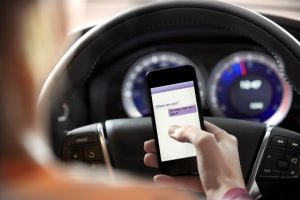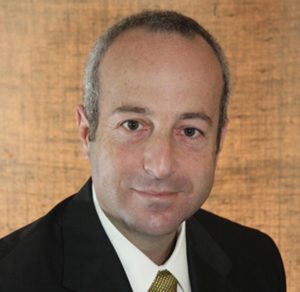Many people think that if a car hits a bicycle, it’s the driver’s fault, but if a bike hits a car, it’s the rider’s fault. However, liability in a bicycle accident is seldom that simple. There are many actions a driver can take that can cause a bicyclist to collide with their vehicle, resulting in driver liability for the accident. learn more about car vs. bicycle accidents and the factors that impact a injury claim below, from our experienced auto accident lawyers.
7. Different Types of Bicycle Vs. Car accidents
Below our experienced auto accident lawyers have compiled some of the more common bicycle and car collisions:
1. Dooring Accidents
More than 900 fatal collisions occur between bicycles and motor vehicles each year in the United States, and thousands more collisions result in injury. Seventy-nine percent of these accidents occur in urban areas, close to bicyclists and fast-moving traffic. One common type of bicycle accident in urban areas is dooring accidents.
Dooring occurs when the occupant of a parked motor vehicle opens the door of their vehicle into the path of a bicyclist. This forces the rider to collide with the door or swerve into another travel lane.
Because of the extreme risk of injury or death posed by motor vehicle occupants not ensuring a travel lane is clear before opening the door of a parked car, traffic safety experts have long advocated teaching new drivers the Dutch reach. The Dutch reach is a method in which drivers and passengers of motor vehicles open the door with their far hands. This action requires their body to twist, making it easy to glance over a shoulder to see if a bicyclist or other roadway user is approaching the bicycle or travel lane.
2. Left-Turn Accidents
When a motorist attempts a left turn at a traffic light that does not feature a green arrow, they must yield the right-of-way to vehicles in the opposing travel lanes and judge a safe gap in traffic to complete the turn. Left-turn bicycle accidents often occur when the driver fails to notice an approaching bicycle and turns into its path, causing the bicycle to hit the vehicle.
There are many reasons why a driver would not see an approaching bicyclist in an oncoming bike or travel lane, including:
- Inattentional blindness is a phenomenon in which the brain attempts to process multiple sources of information in a chaotic situation such as a busy intersection. To do this, the mind focuses on the biggest hazards, such as larger, faster-moving vehicles, while failing to consider smaller hazards such as approaching bicycles or pedestrians in a crosswalk.
- Distracted driving can cause a driver to take their eyes from watching the roadway and their attention from the task of safe driving, which can cause them to make a left turn when there is insufficient space to complete the maneuver without causing an accident.
- Poor lighting at the intersection can make the bicycle hard to see. Many states have laws requiring bicycles to be outfitted with lighting to help motorists more easily see them on the roadway at night. However, it is still the driver’s responsibility to ensure that the intersection is clear before completing a turn.
3. Right-Turn Accidents
While left-turning drivers present significant hazards to bicyclists on urban streets, so do drivers making right-hand turns. Roadways that include bicycle lanes place them along the far right edge of the roadway. Riders should stay on the right edge when roads lack bicycle lanes. These common-sense rules allow drivers to anticipate where a less-visible bicyclist will be riding.
Unfortunately, the laws don’t account for distracted or careless drivers who fail to ensure that there are no bicyclists in the bike lane or on the right-hand edge of a travel lane before making their right turn into the rider’s path.
4. Failure to Yield the Right-of-Way
In most states, bicyclists are granted the same rights and responsibilities on the roadway as the drivers of other vehicle types. This means they must yield the right-of-way at crosswalks, red lights, and stop signs. However, this also means they get the same rights as other roadway users.
Unfortunately, many drivers think that bicyclists are supposed to ride on the sidewalk, are granted the same rules as pedestrians, and are not owed the right-of-way like motor vehicles are.
When a bicyclist enters a roadway correctly, when the right-of-way is legally theirs, they can collide with other vehicles whose drivers have disregarded the law and entered the intersection out of turn.
5. Improper Passing or Merging
Drivers who pass or merge improperly can cause a bicycle to collide with their vehicle by:
- Failing to provide an adequate buffer when overtaking the bicycle. Most state laws require motorists to stay three feet from the bicycles they pass. This avoids a sideswipe accident with the bicycle. Bicyclists don’t need to overcorrect when putting distance between themselves and the vehicle.
- Failing to check their blind spot when passing or merging. All vehicles have a blind spot, which is an area—often around the rear sides of the car—that the driver cannot see in their rear or side-view mirrors. Instead, they must look over their shoulder to ensure a travel lane is clear before merging into it. When passing, they must ensure they have sufficiently overtaken the vehicle before reentering the lane.
- Failing to use a turn signal when changing lanes. Failing to ensure the lane is clear and letting other roadway users—including bicyclists—know that they are planning to merge can result in a bicycle colliding with the vehicle.
6. Distracted Driving
 Distracted driving is among the most common causes of accidents on U.S. roadways. Accounting for more than 3,000 deaths and thousands of injuries each year.
Distracted driving is among the most common causes of accidents on U.S. roadways. Accounting for more than 3,000 deaths and thousands of injuries each year.
Driver distractions involve anything that:
- Causes the driver to look away from the road, such as adjusting the vehicle’s stereo, wipers, or temperature controls or attending to kids or pets in the back seat.
- Causes the driver to take their hands from the wheel, such as eating, drinking, or smoking.
- Causes the driver to think of things other than driving safely, such as daydreaming, thinking about work, or visiting with passengers.
Driver distractions that have received significant attention in recent years are texting and other cell phone use. Most states have passed laws at least prohibiting texting and driving in specific circumstances, such as in work zones or school zones. A driver who is texting or otherwise distracted can fail to notice red lights, stop signs, or even other roadway users in their travel lane, resulting in a collision.
7. Alcohol-Impaired Driving
Alcohol impairment is yet another common cause of all types of fatal and injury accidents.
Alcohol impairment deprives both drivers of the skills they need for driving safely, such as:
- The ability to track moving targets, such as a bicycle entering the road or lights changing from green to red.
- The ability to control speed. It is difficult for bicyclists or other roadway users to determine a safe gap in which to enter the roadway if an oncoming vehicle travels faster than expected.
- The ability to maintain lane position can cause the driver’s vehicle to wander into an adjacent or bicycle lane where a bicyclist is riding.
- The ability to multitask, such as searching for oncoming motor vehicles and bicycles at a stop sign.
- The ability to make good driving decisions, such as stopping at a red light or maintaining a safe and legal speed.
What Should I Do If I Hit a Car With My Bicycle (but It Wasn’t My Fault)?
Bicyclists injured in accidents with negligent drivers should:
- Seek medical attention for your injuries, even if they do not appear to be serious. Certain types of injuries present with delayed symptoms. The only way to know if you have one of those injuries and to prevent the condition from worsening is to be evaluated by a medical professional.
- Request a free case evaluation with an experienced bicycle accident attorney who can evaluate your case and seek compensation for your injury’s financial and emotional costs.
What Is the Bicycle Accident Claims Process?
The personal injury claims process generally begins when you and your attorney agree to work together on your case. Due to the contingent fee billing method, the attorney will serve you without upfront payment.
Instead, at the successful conclusion of your claim, you pay your attorney a percentage of your award. The details of this arrangement will be provided to you at the start of your claim through the contingent fee agreement you enter with your attorney. Once this agreement is in place, your attorney can provide several services to assist you with the claim.
Who Caused Your Accident?
One of the first services your attorney will perform for you is a thorough investigation into the accident to determine who was liable. While liability in a bicycle vs. car accident is most often the driver of the car, there can also be other sources of liability, such as the manufacturer of parts used on the vehicle or bicycle that caused it to malfunction. Your attorney will also want to know what liability insurance resources the at-fault party has, as insurance pays nearly all accident claims.
How Much is Your Claim Worth?
Your attorney will also value your claim but may wait until your condition stabilizes and a clearer picture emerges of the costs of the injury.
Valuing a bike accident claim requires more than adding up the medical, wage loss, and property damage expenses you incurred. Bicycle accident claims also commonly seek non-economic costs, such as pain and suffering, emotional distress, or lost enjoyment of life.
Pay, Deny, or Settle
Once you establish a value to your claim, your attorney will send a demand to the at-fault party’s insurance provider. The provider has three choices when they receive the demand—pay the claim’s value, deny the claim and provide the claimant with a reason for the denial, or offer to settle the claim for less than its established value.
If the insurer offers a settlement, it may not equal the claim’s value. Your attorney can negotiate to get them to raise their offer and fairly compensate you for your injury.
Filing a Personal Injury Lawsuit

Andrew G. Finkelstein, Auto Injury Attorney
Suppose the at-fault party’s insurer refuses to pay the claim in full. Then, your bike accident attorney can file a lawsuit in civil court. A judge or jury will decide whether to hold the at-fault party liable and, if so, how much compensation they owe you. Settlement offers can continue to come after you file a lawsuit.
